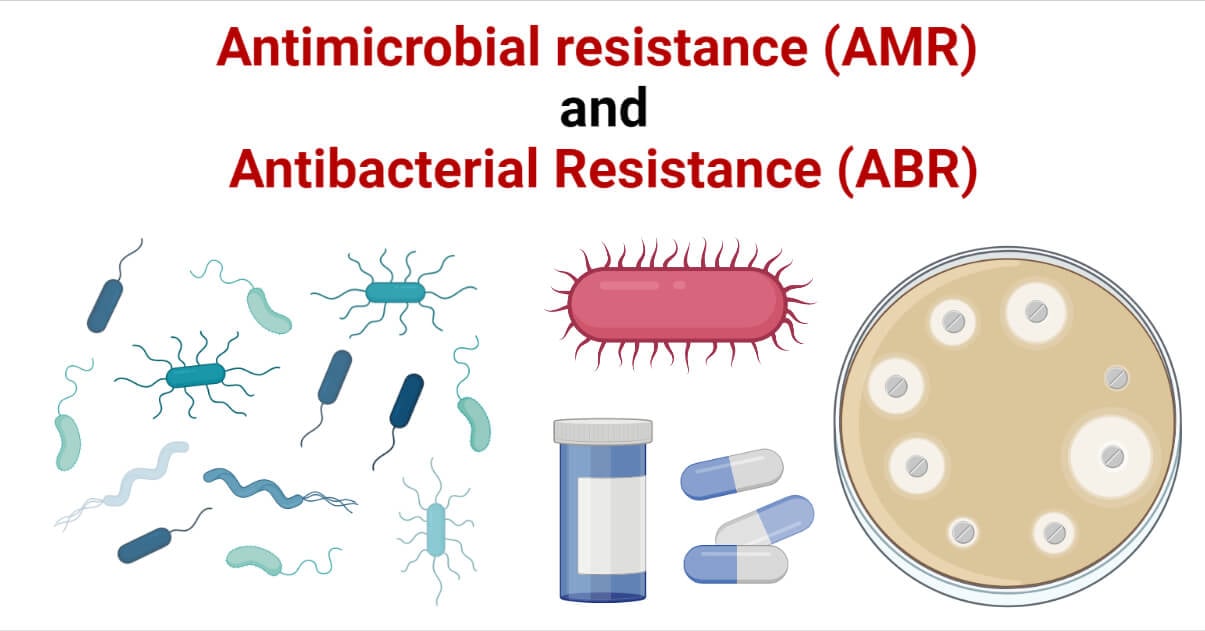Antimicrobial resistance (AMR) development in pathogenic microorganisms is a major public health issue, which is likely to result in aggravated illness, higher mortality, and escalated treatment costs with limited treatment options. If this problem is left as it is, there is no doubt that the death toll will be far more than 10 million death per year by 2050, as estimated in 2014’s AMR Review.

Antimicrobial resistance is the ability of microorganisms to resist themselves from the effect of antimicrobials that were once effective in killing or inhibiting the growth of such microorganisms. The development of antimicrobial resistance allows microbes to grow continuously, even after exposure to antimicrobial agents. If resistance is developed in pathogens, it will increase the recovery period from infection, worsen the infection, increase the medication dosage, and increase the possible mortality rate.
AMR is more commonly observed and studied in bacteria and fungi. Few parasites have also developed resistance to their treatment options. If bacteria develop resistance against “antibiotics”, then it is termed “antibacterial resistance (ABR)”. If a fungus develops resistance against “antifungals”, then it is termed “antifungal resistance (AFR)”. Similarly, “antiviral resistance” and “anthelmintic resistance” is the development of resistance by viruses and helminths against their treatment options respectively.
Antibacterial Resistance (ABR) is the most important among AMR because many pathogenic bacterial species have developed resistance leading to serious infections. Resistance in fungi, viruses, and parasites is minor compared to bacterial resistance, but the report of resistance in them is also increasing.
Interesting Science Videos
AMR is developed generally due to four AMR mechanisms.
- Ability to modify or inactivate the drug
- Reduction in absorption or affinity to drug
- Increased efflux of the drug
- Modifying the cellular components which are the target site of the drug
These mechanisms are developed either due to mutation or the insertion of genes regulating any of these mechanisms.
- Resistance in microbes may be either limited to one type of antimicrobials or multiple types of antimicrobials. If the resistance is against only one type of antimicrobial (structurally and mechanistically similar/same), it is simply called resistance to that particular class. For example, if a bacterium is resistant to penicillin and its derivatives, it is simply called “penicillin-resistant bacteria”.
If the resistance is against different types of antimicrobials having different structures and modes of action, then it is called “multi-drug resistance (MDR)”. It is often stated that to be an MDR, it must be resistant to at least “one antimicrobial in three or more categories” of structurally unrelated antimicrobials.
- MDR pathogens are called the “SUPER BUGS”.
- MDR is further classified as “Extensively Drug-Resistant (XDR)”, and “Pan Drug-Resistant (PDR)”. XDR organisms will be susceptible to antimicrobials in at most two structurally unrelated antimicrobial classes. PDR organisms will be resistant to all available antimicrobials.
- The World Health Organization (WHO) has labeled AMR as one of the top 10 global public health threats. In 2017, the WHO released a list of pathogens in a report named “ Global priority list of antibiotic-resistant bacteria to guide research, discovery, and development of new antibiotics”
- In 2019, the US Center for Disease Control and Prevention (CDC) released a list of resistant bacteria and fungi in the CDC’s 2019 AR Threat Report. This list includes bacteria listed in the WHO’s 2017 list but contains additional pathogens of concern in the US.
WHO 2017; Global Priority Pathogens List of antibiotic-resistant bacteria
The WHO has categorized antibiotic-resistant bacteria into three priority lists, viz.:
Priority 1: Critical
It includes MDR bacteria that are mainly associated with hospital-acquired infections. It includes:
- Carbapenem-resistant Acinetobacter baumannii (CRAB)
- Carbapenem-resistant Pseudomonas aeruginosa (CRPA)
- Carbapenem-resistant, Extended spectrum -lactamase (ESBL) producing (3rd generation cephalosporin-resistant) Enterobacteriaceae
(Among the Enterobacteriaceae, E. coli, Klebsiella pneumoniae, Proteus spp., Serratia spp., Providentia spp., Morganella spp., and Enterobacter spp. are of major concern)
Priority 2: High
- Vancomycin-resistant Enterococcus faecium
- Methicillin-resistant, vancomycin-intermediate, and resistant Staphylococcus aureus
- Clarithromycin-resistant Helicobacter pylori
- Fluoroquinolone-resistant Campylobacter spp.
- Fluoroquinolone-resistant Salmonella
- 3rd generation cephalosporin-resistant, fluoroquinolone-resistant Neisseria gonorrhoeae
Priority 3: Medium
- Penicillin-non-susceptible Streptococcus pneumoniae
- Ampicillin-resistant Haemophilus influenzae
- Fluoroquinolone-resistant Shigella spp.
CDC 2019; Antibiotic Resistance Threat List
The US CDC has listed antimicrobial resistant bacteria and fungi into four threat lists, viz.:
Urgent Threats
This list includes five pathogens exacting urgent and aggressive actions.
- Carbapenem-resistant Acinetobacter (Carbapenem-resistant A. baumannii is species of major concern)
- Drug-resistant Candida auris
- Clostridium difficile
- Carbapenem-resistant Enterobacteriaceae
- Drug-resistant Neisseria gonorrhoeae
Serious Threats
This list includes 11 pathogens that need prompt and sustained action.
- Drug-resistant Campylobacter
- Drug-resistant Candida
- ESBL-producing Enterobacteriaceae
- Vancomycin-resistant Enterococci (VRE)
- Multidrug-resistant Pseudomonas aeruginosa
- Drug-resistant non-typhoidal Salmonella
- Drug-resistant Salmonella serotype Typhi
- Drug-resistant Shigella
- Methicillin-resistant Staphylococcus aureus (MRSA)
- Drug-resistant Streptococcus pneumoniae
- Drug-resistant Tuberculosis
Concerning Threats
This list includes two pathogens demanding careful monitoring and preventive majors.
- Erythromycin-resistant group A Streptococcus
- Clindamycin-resistant group B Streptococcus
Watch List
This list includes three pathogens that are uncommon but have the potential to spread.
- Azole-resistant Aspergillus fumigatus
- Drug-resistant Mycoplasma genitalium
- Drug-resistant Bordetella pertussis
References
- de Kraker ME, Stewardson AJ, Harbarth S. Will 10 Million People Die a Year due to Antimicrobial Resistance by 2050? PLoS Med. 2016 Nov 29;13(11):e1002184. doi: 10.1371/journal.pmed.1002184. PMID: 27898664; PMCID: PMC5127510.
- A.-P. Magiorakos, A. Srinivasan, R. B. Carey, Y. Carmeli, M. E. Falagas, C. G. Giske, S. Harbarth, J. F. Hinndler et al.Multidrug-resistant, extensively drug-resistant and pandrug-resistant bacteria: an international expert proposal for interim standard definitions for acquired resistance. Clin Microbiol Infect 2012; 18: 268–281 10.1111/j.1469-0691.2011.03570.x
- Antibiotic Resistance Threats in the United States, 2019 (cdc.gov)
- 2019 Antibiotic Resistance Threats Report | CDC
- WHO global priority pathogens list of antibiotic-resistant bacteria – Combat AMR
- lobal-priority-list-of-antibiotic-resistant-bacteria-2017.pdf (remed.org)
- Antimicrobial resistance (who.int)
- Antimicrobial resistance (who.int)
